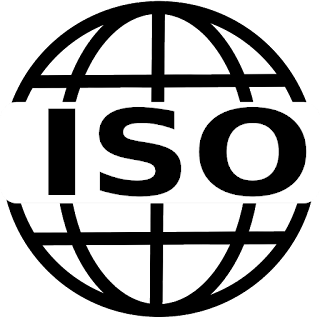Measurement Uncertainty in ISO/IEC 17025:2017
ISO/IEC 17025:2017, the international standard for testing and calibration laboratories, recognizes the importance of measurement uncertainty as a critical factor in evaluating the reliability of measurement results. In this blog, we will delve into the significance of measurement uncertainty in ISO/IEC 17025:2017 implementation and provide an example of how it is calculated to ensure credible and precise measurement outcomes.
Understanding Measurement Uncertainty:
Measurement uncertainty refers to the range within which the true value of a measurement is expected to lie, considering all possible sources of errors and uncertainties in the measurement process. It is an essential indicator of the reliability and quality of measurement results.
Example Scenario:
Let's consider a fictitious "Metrology Solutions Lab" (MSL), a calibration laboratory that specializes in calibrating temperature measurement equipment. MSL is committed to providing accurate and reliable calibration services. To ensure the highest level of quality, MSL calculates measurement uncertainty for its temperature calibration processes in compliance with ISO/IEC 17025:2017.
Step 1: Identifying Sources of Uncertainty
MSL starts by identifying all potential sources of uncertainty in the temperature calibration process. This includes uncertainties from equipment used, calibration standards, environmental conditions, and the calibration procedure itself.
Step 2: Quantifying Uncertainty Components
Next, MSL quantifies the uncertainty associated with each identified source. For example, the uncertainty of the reference standard used in the calibration process is determined based on the manufacturer's specifications and the laboratory's calibration records. Similarly, the uncertainty associated with the calibration equipment is evaluated using calibration certificates and calibration data.
Step 3: Combining Uncertainties
MSL combines individual uncertainty components to calculate the overall measurement uncertainty. This is often done using statistical methods, such as the root-sum-of-squares method, which considers the contributions of all uncertainty sources to the total uncertainty.
Step 4: Expressing Uncertainty
Finally, MSL expresses the measurement uncertainty using a confidence level, typically represented by a coverage factor (k). A commonly used confidence level is k=2, corresponding to a 95% confidence level. This means that the true value of the measured parameter is expected to lie within the stated uncertainty range with a probability of 95%.
Example Calculation:
Suppose MSL calibrates a temperature sensor and determines that the measurement uncertainty is ±0.2°C with a coverage factor (k) of 2. This means that there is a 95% probability that the true value of the temperature lies within the range of the measured value ±0.2°C. For example, if MSL measures the temperature as 25.0°C, the true temperature is expected to be between 24.8°C and 25.2°C.
Benefits of Measurement Uncertainty in ISO/IEC 17025:2017:
The calculation and consideration of measurement uncertainty bring several benefits to laboratories like Metrology Solutions Lab (MSL):
a. Enhanced Credibility: Communicating measurement uncertainty provides customers and stakeholders with confidence in the accuracy and reliability of MSL's calibration services.
b. Compliance with ISO/IEC 17025:2017: ISO/IEC 17025:2017 mandates the estimation and reporting of measurement uncertainty, making it a critical aspect of compliance for MSL.
c. Informed Decision-Making: Knowledge of measurement uncertainty helps customers make informed decisions based on the reliability of measurement results.
d. Process Improvement: Understanding and managing measurement uncertainty enables MSL to identify areas for improvement and optimize its calibration processes.
e. Industry Recognition: Accurate estimation of measurement uncertainty is a mark of technical competence, gaining recognition within the industry and the scientific community.
Measurement uncertainty is a fundamental aspect of ISO/IEC 17025:2017 implementation, reflecting the reliability and precision of measurement results. By calculating and reporting measurement uncertainty, laboratories like Metrology Solutions Lab (MSL) demonstrate their commitment to adhering to international standards and delivering accurate and trustworthy calibration services. Measurement uncertainty analysis not only enhances the credibility of the laboratory but also supports informed decision-making and risk management. As laboratories continue to progress, embracing the importance of measurement uncertainty remains essential for achieving excellence in testing and calibration services.
Need Calibration Service in Bangladesh, Please visit Cintex Calibration Laboratory







